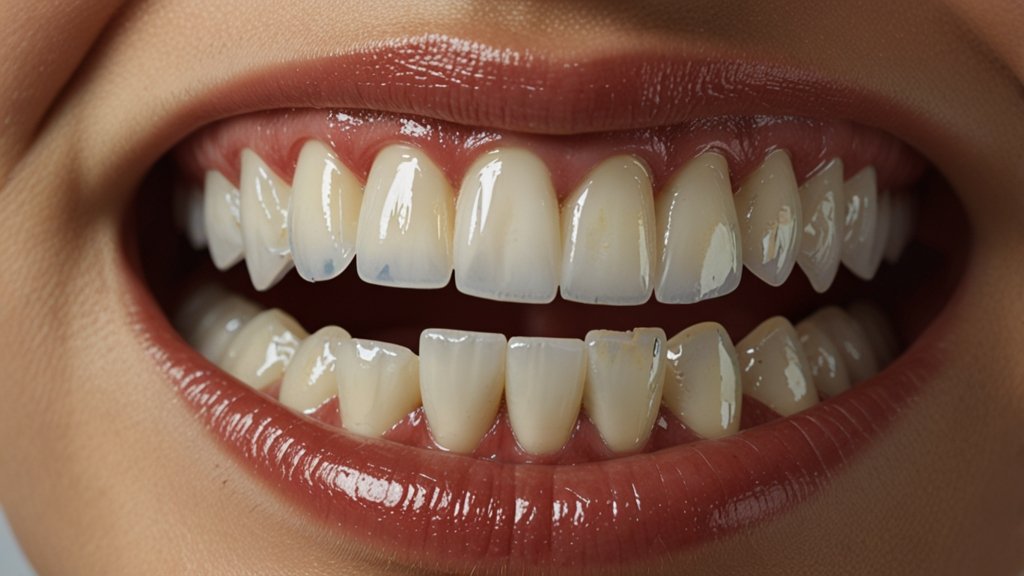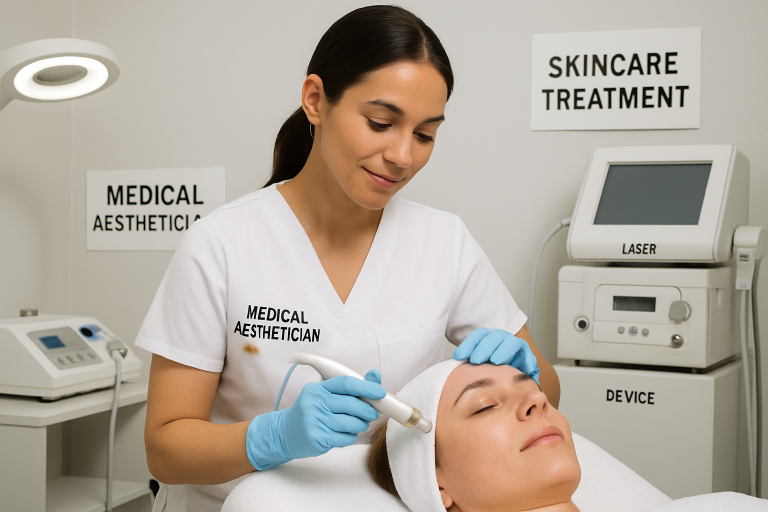Key Takeaways
- Teeth bonding is a minimally invasive and effective cosmetic dental option for fixing chips, cracks, stains, and small spaces between teeth.
- Treatment is typically completed quickly, often in one visit, and can provide instant, natural-looking results.
- Bonding is more affordable than other cosmetic treatments, with most procedures involving minimal discomfort or downtime.
- Good home care and regular dental visits are essential for maintaining the longevity and aesthetics of bonded teeth.
- As oral health professionals have highlighted, bonding is a great way for many adults to improve their smiles without extensive dental work.
Table of Contents
- Why Consider Teeth Bonding?
- What Happens During Teeth Bonding?
- Benefits of Teeth Bonding
- Who Is a Good Candidate?
- Aftercare Tips for Bonded Teeth
- Potential Longevity and Limitations
- Costs and Affordability
- Emerging Trends in Cosmetic Dentistry
Why Consider Teeth Bonding?
Many adults want to smile confidently but cringe at the idea of expensive, time-consuming dental work. Suppose you’re among the many who notice minor chips, small gaps, stubborn discoloration, or slight misshaping in your teeth. In that case, you’re far from alone—up to one in three adults express some level of embarrassment about the appearance of their teeth. Teeth bonding has become a popular cosmetic dental solution, largely thanks to its ability to address these issues quickly, effectively, and affordably. This procedure can restore tooth shape, reduce noticeable gaps, and improve color, providing noticeably brighter results in a fraction of the time compared to other dental options.
For those new to cosmetic dentistry, teeth bonding removes much of the anxiety tied to permanent or surgical fixes. There’s no need for dental anxiety over drills, multiple appointments, or complex aftercare. It’s a straightforward enhancement many dentists see as a first step for people unsure about longer or more intensive treatments. If you’re curious to learn more in-depth details about this procedure and how it could fit your goals, the comprehensive resource on What is dental bonding offers clear information on the topic and answers frequently asked questions.
What Happens During Teeth Bonding?
The teeth bonding process prioritizes comfort and efficiency, making it a popular choice for quick cosmetic improvements. One of the key benefits of dental bonding is its ability to deliver natural-looking results with minimal invasiveness. During the appointment, your dentist will use a detailed color-matching guide to select a shade of composite resin that blends seamlessly with your surrounding teeth. This ensures the repaired or enhanced area is virtually indistinguishable from your natural smile. To prepare, the targeted tooth is gently roughened—typically with a mild etching solution—to help the bonding material adhere securely. This step is crucial for long-lasting results, yet remains gentle enough to preserve healthy tooth structure.
Resin—a soft, tooth-colored putty—is carefully applied, then gently sculpted and molded to restore or reshape the tooth. Artistry comes into play here as the dentist fashions the resin into the most natural and flattering shape possible, correcting chips or refining contours. A special blue light then hardens the resin in minutes, ensuring it’s durable enough to withstand everyday biting and chewing. The finishing touches involve subtle adjustments and a final polish, making the bonded area smooth and shiny. Most people can return instantly to work, school, or errands without anesthesia or a lengthy recovery.
Benefits of Teeth Bonding
- Immediate Transformation: Unlike dental veneers or crowns that require multiple visits and lab work, bonding offers rapid results. Patients notice their flaws have vanished in just one session, bringing a renewed sense of confidence.
- Minimal Tooth Alteration: The bonding process is conservative. There’s little to no reduction of natural enamel, which means the underlying structure of your tooth is preserved for future treatments if desired.
- Cost-Effective: Bonding expenses are notably less than those associated with other major cosmetic options, making it accessible to many budgets.
- No Downtime: The procedure allows you to continue your day normally—speak, eat, and smile with no recovery period.
- Customizable and Non-Permanent: Because bonding can be modified or removed, you maintain flexibility for future choices as your needs or preferences change.
Bonding has emerged as a widely trusted option for people seeking significant improvement with minimal hassle. Many dentists view it as the ideal balance between aesthetics and preservation of natural teeth.
Who Is a Good Candidate?
Teeth bonding is typically recommended for those with otherwise healthy teeth and gums who experience mild to moderate cosmetic issues. Whether it’s a single chipped tooth from an accidental fall or a series of small gaps that have bothered you for years, bonding delivers reliable results without disrupting your normal oral function. If your primary concern is minor flaws, your dentist will likely consider you a great candidate.
However, individuals with significant tooth decay, large fractures needing structural reinforcement, or major bite concerns might be better served by alternatives such as crowns, orthodontics, or more intensive restorations. To learn more about who qualifies and how various cosmetic procedures compare, the American Dental Association’s overview of cosmetic dentistry is a valuable and impartial resource for patients and professionals.
Aftercare Tips for Bonded Teeth
Taking care of bonded teeth is straightforward but crucial for lasting results. The composite resin used in bonding can be vulnerable to staining and chipping, so good daily habits make a world of difference. Brushing twice daily with fluoride toothpaste and flossing gently keeps your teeth and the bonding material clean and healthy. Rinsing after brightly colored foods and drinks can help minimize the risk of staining, especially in the first 48 hours after bonding.
- Immediately after your procedure, avoid hard foods like ice, hard candy, and nuts, and avoid biting pens or using your teeth as tools.
- Regular dental cleanings every six months allow your dentist to catch potential wear or edge chips early and remove minor surface stains before they become noticeable.
- If you grind your teeth at night, talk to your dentist about a nightguard to protect the bonded areas from unnecessary stress.
- Should you notice any roughness, sensitivity, or changes in the feel of your bonded teeth, schedule a visit promptly for a professional assessment and adjustments.
Following these simple aftercare steps can help ensure your smile remains bright and your bonding lasts as long as possible.
Potential Longevity and Limitations
Dental bonding is a worthy investment for many, but it’s essential to have realistic expectations about its durability. On average, the bonding material remains intact and attractive for three to ten years, depending on placement, lifestyle, and personal oral hygiene. Teeth toward the front of your mouth, which aren’t subject to the same chewing forces as molars, tend to maintain their bonding longer.
Common culprits like smoking, coffee, red wine, and tea can cause the composite to discolor more quickly than natural enamel. While resin is strong, it isn’t as resistant to breakage or stains as porcelain. The upside is that touching up or repairing bonding is often simple, fast, and affordable compared to redoing a crown or veneer. Many find this trade-off worthwhile, particularly if cosmetic priorities or finances may change over the years. A quick dental touch-up usually restores the look to new, keeping overall costs and inconvenience low.
Costs and Affordability
The affordability of teeth bonding attracts many patients who want to enhance their smiles without making a significant financial commitment. Most dental providers charge between $100 and $600 per bonded tooth, varying prices based on location, repair size, and complexity. Generally, bonding used for cosmetic repairs is considered an elective procedure by insurance providers and may not be covered. However, if bonding is used to repair a damaged tooth following trauma, your insurance might offset some costs.
For many families, bonding’s lower price point and long-lasting performance make it a practical choice. When compared side-by-side with the cost and commitment of porcelain veneers or crowns, teeth bonding remains both accessible and reliable, ideal for those experimenting with cosmetic treatments or saving for additional work in the future.
Emerging Trends in Cosmetic Dentistry
Cosmetic dentistry continues to experience exciting progress, with teeth bonding becoming more sophisticated as new materials and techniques are developed. Today, advanced composite resins closely mimic natural teeth’s translucency and subtle shading, allowing even closer matches and more realistic cosmetic outcomes. Techniques such as digital smile design, 3D scanning, and computer-aided modeling are now being incorporated to help dentists and patients visualize expected results and adjust for a perfect fit.
Demand for quick, painless, and cost-conscious improvements means teeth bonding is here to stay and is positioned at the forefront of modern smile aesthetics. Many individuals use bonding as a first step before exploring other cosmetic procedures, testing enhancements before investing in permanent solutions. As dental research and technology evolve, patients can expect teeth bonding to become stronger, easier to maintain, and even more lifelike.
YOU MAY ALSO LIKE: Smart Habits for Maintaining Strong Oral Health Throughout Your Life











